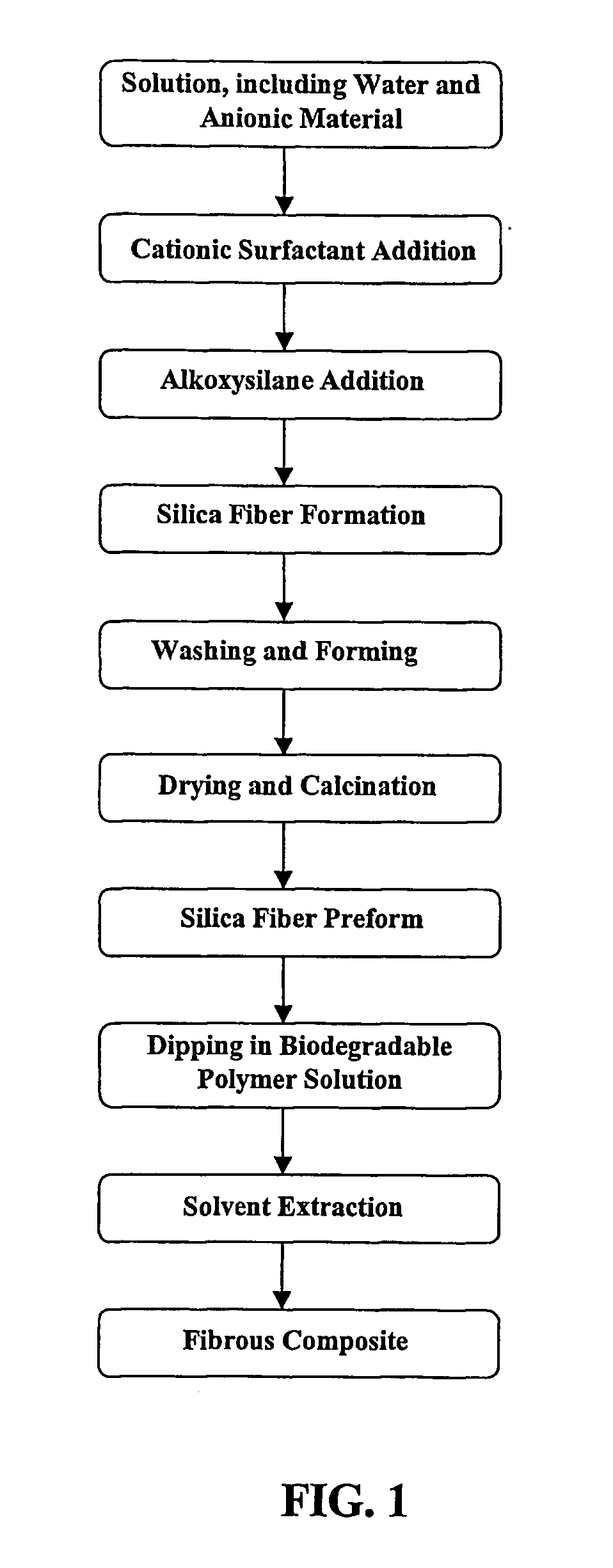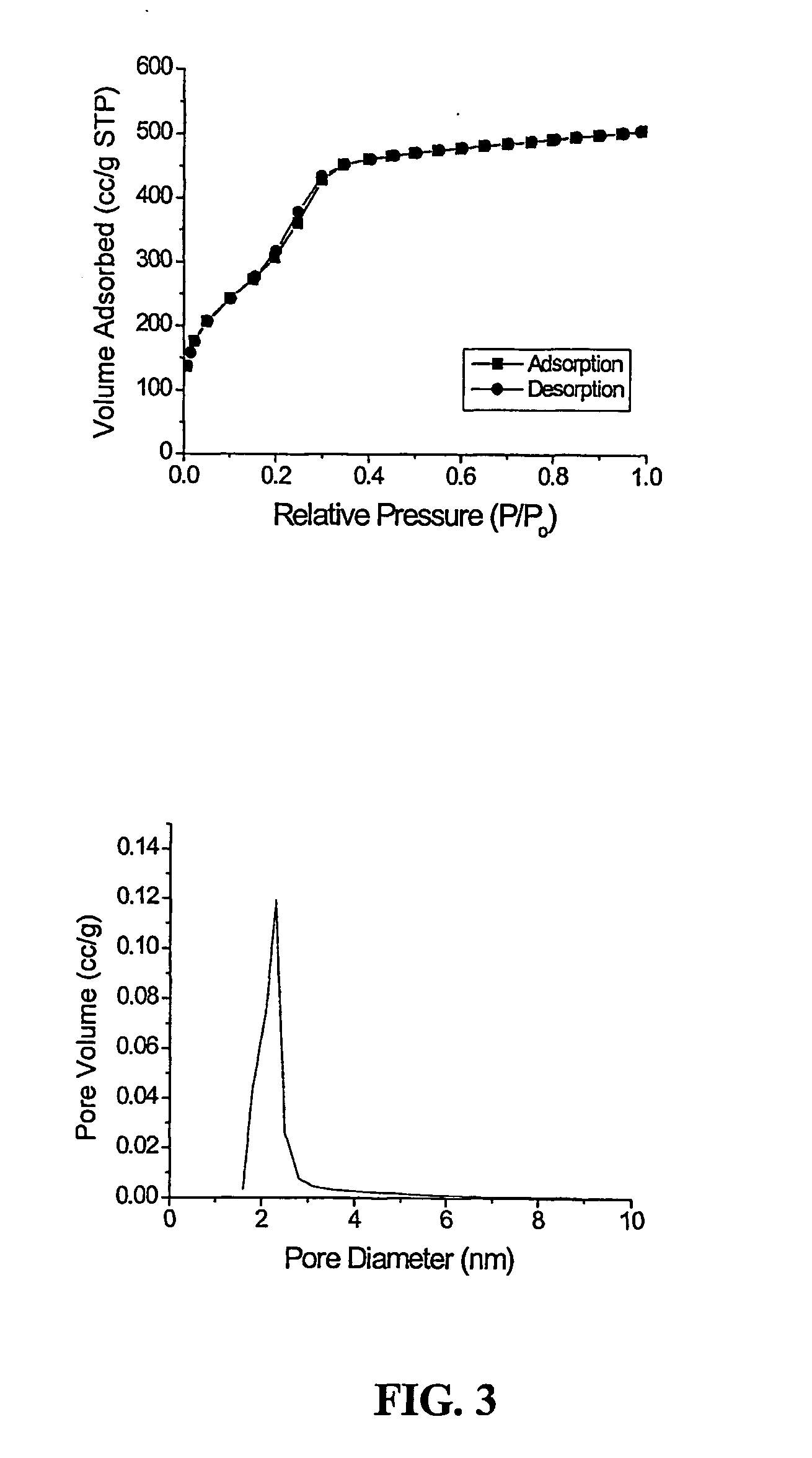Fibrous composite for tissue engineering
a fibrous composite material and tissue engineering technology, applied in the field of bioactive, biodegradable fibrous composite materials, can solve the problems of too weak mechanically and large pores to permit useful handling or application
- Summary
- Abstract
- Description
- Claims
- Application Information
AI Technical Summary
Benefits of technology
Problems solved by technology
Method used
Image
Examples
example 1
Method of Preparing and Testing Fibrous Silica / Polymer Composites
[0077] A flow chart of the method of preparing bioactive fibrous composites is shown in FIG. 1, wherein the fibers are silica. 1. 0.6973 g of cetyltrimethylammonim bromide (CTAB) surfactant and 22.2115 g of HCl (37.3 wt %) were added to 126.0734 g H2O. CTAB and HCl are used as cationic surfactant and anionic material to allow emulsion formation of two phases (oil and water). After emulsification, terabutylorthosilicate (TBOS) as silicon source is added dropwise to the solution. The solution is held at room temperature for 5 to 7 days to allow reaction without stirring. The reacted solution is then washed 5 times with centrifuge. After centrifuging at 10,000 rpm for 2 minutes, it is dried at room temperature to harvest the fibers. The fibers are heated at 1° C. / minute to a temperature of 500° C., and held at that temperature for 8 hours for calcination.
[0078] The prepared fibers were observed with scanning electron mi...
PUM
| Property | Measurement | Unit |
|---|---|---|
| temperature | aaaaa | aaaaa |
| diameter | aaaaa | aaaaa |
| particle size | aaaaa | aaaaa |
Abstract
Description
Claims
Application Information
 Login to View More
Login to View More - R&D
- Intellectual Property
- Life Sciences
- Materials
- Tech Scout
- Unparalleled Data Quality
- Higher Quality Content
- 60% Fewer Hallucinations
Browse by: Latest US Patents, China's latest patents, Technical Efficacy Thesaurus, Application Domain, Technology Topic, Popular Technical Reports.
© 2025 PatSnap. All rights reserved.Legal|Privacy policy|Modern Slavery Act Transparency Statement|Sitemap|About US| Contact US: help@patsnap.com



